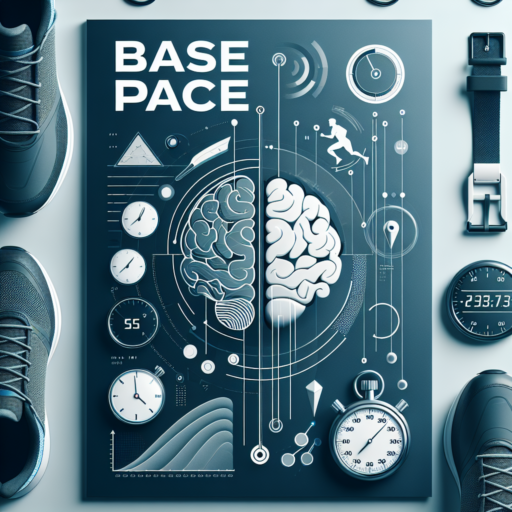What Is a 2:15 Half Marathon Pace and How to Achieve It
A 2:15 half marathon pace is a goal that many runners aim to achieve, representing a substantial accomplishment in the world of long-distance running. This pace means completing the 13.1-mile (about 21.1 kilometers) race in two hours and fifteen minutes, which breaks down to an average pace of approximately 10 minutes and 18 seconds per mile (6:24 per kilometer). For many, achieving this target is a milestone, indicating a high level of endurance and speed.
To reach a 2:15 half marathon pace, a well-structured training plan is crucial. This should involve a mix of long runs for building endurance, tempo runs to increase your lactate threshold, and interval training to improve speed and recovery. Nutrition and hydration also play pivotal roles in your training, ensuring that your body has the fuel and recovery resources it needs to perform and adapt.
Moreover, incorporating strength training and flexibility exercises into your routine can greatly enhance your running efficiency and reduce the risk of injury. Exercises focusing on the core, glutes, and leg muscles will complement your running, making your stride more powerful and efficient. Additionally, allowing ample recovery time between intense sessions is critical for preventing overtraining and fostering muscular recovery and growth.
The Benefits of Training for a 2:15 Half Marathon Pace
Training for a 2:15 half marathon pace is not just about crossing the finish line; it’s about unlocking a multitude of benefits that enhance both your physical and mental well-being. Embarking on this journey prepares your body to endure and thrive, transforming you into a more resilient runner. Here, we explore the significant advantages that come with targeting this challenging yet rewarding pace.
Enhanced Cardiovascular Health
Aiming for a half marathon pace of 2:15 necessitates consistent, moderate to high-intensity training. This type of regimen boosts your heart’s efficiency, enabling it to pump more blood per beat. Over time, your heart muscle strengthens, your resting heart rate lowers, and your overall cardiovascular health improves. Training at this intensity also helps in reducing the risk of heart-related diseases by keeping the arteries clear and blood pressure in check.
Improved Mental Resilience
Apart from the physical prowess you gain, training for a 2:15 half marathon pace significantly betters your mental stamina. The dedication, discipline, and focus required to adhere to a rigorous training plan enhance your mental resilience. Conquering long runs, interval training, and embracing early mornings or late evenings for workouts instill a sense of accomplishment and confidence that seeps into other areas of life. This mental fortitude helps in tackling life’s challenges with a more determined and positive outlook.
No se han encontrado productos.
Step-by-Step Training Plan for a 2:15 Half Marathon Pace
Achieving a 2:15 half marathon pace requires dedication, proper guidance, and an intelligently structured training plan. This goal translates to maintaining a pace of approximately 10:18 per mile, an achievable milestone for many runners with the right approach. The essence of this training is to gradually enhance your endurance, speed, and strategy over a period, typically spanning 12 to 16 weeks, depending on your current fitness level and running experience.
Building Your Base
The first phase in your training plan emphasizes building a strong aerobic base. This involves running 3 to 5 times a week at a comfortable pace where you can easily hold a conversation. The key is consistency without pushing your pace, aiming for a total weekly mileage of 15-25 miles. Incorporating a long run into your weekly schedule, gradually increasing in distance, is crucial. These long-distance runs boost your endurance, preparing your body to handle the prolonged effort required for a 2:15 half marathon.
Incorporating Speed and Tempo Work
Once a solid base is established, the next step involves incorporating speed work and tempo runs into your routine. Speed sessions should focus on intervals, such as 400 to 800 meters, run at a pace faster than your goal half marathon pace, followed by equal or slightly longer recovery periods. Tempo runs, on the other hand, are conducted at a steady, challenging pace—close to your desired half marathon speed—for a sustained period, typically 20-40 minutes. These workouts are crucial for improving your running economy and teaching your body to sustain a faster pace over distance.
Nutrition and Hydration Strategies for a 2:15 Half Marathon
Achieving a half marathon time of 2 hours and 15 minutes is a significant goal that requires not only rigorous training but also a sophisticated approach to nutrition and hydration. Understanding how to fuel your body before, during, and after the race is key to optimizing performance and recovery.
Pre-Race Nutrition
Starting your race with a well-fueled body is critical. Consume a high-carbohydrate meal 3 to 4 hours before the race. This meal should be low in fat and fiber to minimize gastrointestinal distress. Suitable options include oatmeal with bananas, a bagel with peanut butter, or a rice bowl with lean protein. Keeping yourself well-hydrated in the days leading up to the race is equally important. Aim for light-colored urine to gauge adequate hydration.
During-Race Hydration and Nutrition
During the race, maintaining hydration is vital, especially in warmer conditions. Plan to consume about 3 to 6 ounces of water or a sports drink every 15 to 20 minutes. Sports drinks with electrolytes can help replenish sodium and potassium lost through sweat. Additionally, incorporating small amounts of easily digestible carbohydrates can keep energy levels stable. Energy gels or chews are popular choices—aim for 30 to 60 grams of carbohydrates per hour to sustain optimal performance.
Strategically managing your nutrition and hydration can significantly impact your half marathon experience and outcome. Remember, practicing your nutrition and hydration strategy during training runs is crucial for finding what works best for your body and ensuring your plan is as effective as possible on race day.
Essential Gear for Running a 2:15 Half Marathon
Training for and achieving a 2:15 half marathon time requires more than just dedication to your running schedule. The right gear can make a significant difference in your performance, aiding both in comfort and efficiency on the race track. From proper footwear to streamlined clothing, every item has its role in helping you hit your target time.
High-Performance Running Shoes
The cornerstone of any runner’s gear is a pair of high-performance running shoes. These shoes should not only provide ample support and cushioning but also be light enough to minimize energy expenditure with every step. Consider models that are specifically designed for speed and have a positive track record in the running community. Brands like Nike, Adidas, and Brooks often release shoes tailored for fast-paced running, offering both the bounce and the durability needed for intensive training and long races.
Moisture-Wicking Apparel
When chasing a 2:15 half marathon, the last thing you want is for your clothes to become a source of discomfort. Moisture-wicking fabrics are crucial as they pull sweat away from your body, keeping you dry and comfortable throughout your run. Look for options that are not only functional but also fit well to avoid any unnecessary drag. A well-fitted, breathable running shirt and shorts can make a considerable difference, especially in race conditions.
Moreover, consider accessories like a high-quality running belt to carry your essentials without adding bulk or a lightweight hydration pack if the race conditions require. Sunglasses with UV protection and a cap might also be beneficial, depending on the weather on the day of the race. Ultimately, the right gear will support your physical efforts, potentially making a pivotal difference in achieving a 2:15 half marathon time.
Common Challenges and How to Overcome Them
Encountering challenges is a universal aspect of life and work. However, the way we approach and overcome these hurdles can significantly shape our path to success. Identifying common issues and strategizing effective solutions is crucial.
Navigating Through Communication Barriers
One prevalent challenge many face is communication barriers. These can stem from linguistic differences, cultural misunderstandings, or even variations in communication styles. To overcome such obstacles, it is essential to foster an environment of open dialogue and active listening. Employing tools like translation services or engaging in team-building activities can also bridge the gap, ensuring that every voice is heard and valued.
Adapting to Technological Changes
In the fast-paced world of technological innovation, staying abreast of the latest developments is paramount. The challenge arises when individuals or organizations find it difficult to keep up, leading to operational inefficiencies. To mitigate this, dedicating resources to continual learning and development is key. By enrolling in relevant courses or workshops and encouraging a culture of curiosity, teams can become more adaptable and forward-thinking.
Overcoming Resource Limitations
An obstacle often faced by many is operating within resource limitations. This can pertain to budget constraints, time restrictions, or human capital. Tackling this issue head-on involves meticulous planning and strategic allocation of resources. Employing project management tools can enhance efficiency, while prioritizing tasks based on importance and urgency can ensure that crucial objectives are met with the resources available.
Success Stories: From Beginners to a 2:15 Half Marathon
The journey from a novice runner to completing a half marathon in 2:15 is both inspiring and instructive. Individuals from various backgrounds, each with their unique challenges and triumphs, have shared their stories, providing a roadmap for others aiming to achieve similar goals. These narratives not only showcase the sheer determination and hard work required but also highlight the strategic planning and adjustments needed along the way.
Among these stories, a consistent theme is the importance of structured training plans. A well-thought-out training regimen that gradually increases in intensity can make a significant difference in performance. Beginners often underestimate the value of rest days and recovery, yet these elements are critical in preventing injuries and ensuring steady progress. By listening to their bodies and adapting their training accordingly, many were able to push their limits and reach the coveted 2:15 mark.
Nutrition and diet also play a pivotal role in a runner’s journey. Success stories often reference the adjustment of dietary habits to fuel the body efficiently for both training and the actual half marathon. Optimal hydration, balanced macronutrient intake, and timely meals can significantly enhance a runner’s performance. These athletes learned to treat food as fuel, understanding that the quality of their intake directly influenced their training outcomes and race day performance.
Measuring Progress: Tracking Your Path to a 2:15 Half Marathon
Setting your sights on a 2:15 half marathon is an impressive goal that requires not just dedication and hard work but also a strategic approach to measuring progress. With the right tracking strategies, you can ensure you’re on the path to success. It’s not just about the miles you run; it’s about understanding and interpreting the data your workouts provide.
Establishing Baseline Metrics
Before diving deep into tracking your progress, establishing a set of baseline metrics is crucial. This includes your current half marathon time, average pace per mile, heart rate during runs, and how these numbers change under various conditions. Knowing your starting point empowers you to set realistic milestones throughout your training, ensuring that every run brings you closer to your 2:15 target.
Embracing Technology for Detailed Insights
In today’s digitally advanced world, leveraging technology can provide you with an edge in your training. Using GPS watches and running apps to track your distance, pace, elevation gain, and more, offers a comprehensive view of your performance. Analysis of this data over time reveals trends and patterns, enabling focused improvements. It’s crucial to pay attention to the consistency of your pace, particularly on long runs, as this is directly related to achieving your goal half marathon time.
Remember, successfully achieving a 2:15 half marathon time demands more than just physical endurance; it requires meticulous attention to detail in tracking and analyzing your progress. Every run, every interval, and every rest day contributes to your journey, painting a clear picture of where you stand and what needs to be done to cross the finish line in your goal time.
Frequently Asked Questions About Running a 2:15 Half Marathon
Aiming for a 2:15 half marathon is a common goal among intermediate runners seeking to challenge their personal bests. This target time requires not just consistent training, but also a deep understanding of race strategy and nutrition. Here, we address some of the most frequently asked questions about achieving this ambitious but attainable goal.
What Training Plan Should I Follow?
Training for a 2:15 half marathon means you’ll need to integrate a variety of workouts into your regime. Speedwork, long runs, and tempo runs are crucial components. It’s recommended to follow a structured 12 to 16-week training plan designed for intermediate to advanced runners. Tailoring your schedule to include rest days and cross-training is essential for injury prevention and overall performance improvement.
How Important is Nutrition?
Nutrition plays a pivotal role in your half marathon success. Focusing on balancing carbohydrates, proteins, and fats in your diet ensures your body has the necessary fuel for both training and the race itself. Hydration strategies should also be practiced during training runs to mimic race conditions. Experimenting with different types of energy gels or chews during long runs can help you find what works best for your stomach on race day.
Can I Improve My Half Marathon Time by Cross-Training?
Yes, cross-training is an effective way to improve your half marathon time. Activities such as cycling, swimming, and strength training not only help in preventing injuries by balancing muscle groups but also improve overall cardiovascular fitness. Including at least one day of cross-training per week can contribute significantly to achieving your 2:15 half marathon goal.
Expert Tips for Maintaining Pace and Avoiding Injuries
Maintaining a consistent pace and staying injury-free are critical components of any fitness or sports regimen. Whether you’re a seasoned athlete or a fitness enthusiast looking to stay active, understanding the balance between pushing yourself and knowing when to take a step back is crucial for long-term success and health. The following expert tips can help guide you in maintaining your pace while minimizing the risk of injury.
Listen to Your Body
One of the most fundamental pieces of advice for avoiding injuries is to listen to your body. It’s essential to be attentive to the signals your body sends you. If you experience discomfort beyond the usual muscle fatigue, it might be time to pause and reassess your training program. Paying attention to these cues and adjusting accordingly can prevent minor issues from becoming serious injuries. Incorporate rest days into your schedule to allow your body adequate recovery time, a crucial step for maintaining your pace without overexertion.
Incorporate Variety in Your Training
Variety in your training regimen is not just about staving off boredom; it’s a strategic approach to reduce the risk of overuse injuries. By mixing different types of workouts—such as strength training, cardio, and flexibility exercises—you evenly distribute the workload across various muscle groups. This variety helps in building a more balanced physique and prevents any single muscle group from being overworked, which is a common cause of injuries. Remember, diversity in your training is as much about injury prevention as it is about progress.
Stay Diligent with Warm-Up and Cool-Down Routines
Never underestimate the power of a proper warm-up and cool-down routine. Warming up prepares your body for the increased physical demands of your workout, reducing the likelihood of muscle strains and sprains. Similarly, cooling down helps to gradually bring your heart rate back to its resting state and begins the recovery process for your muscles. Incorporating dynamic stretches in your warm-up and static stretches in your cool-down can significantly contribute to injury prevention and maintaining a consistent pace in your training regimen.




